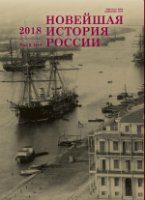«Разбойничий» киножанр и его расцвет в годы Первой мировой войны
The "Bandit" Film Genre and its Flourishing during First World War
Author(s): V. V. UstyugovaSubject(s): Cultural Anthropology / Ethnology, Criminology, Pre-WW I & WW I (1900 -1919), Between Berlin Congress and WW I, Film / Cinema / Cinematography
Published by: Издательство Исторического факультета СПбГУ
Keywords: modernity; cinema; urbanism; First World War; mass culture; criminal genre; detective;
Summary/Abstract: Films of the criminal genre were widely popular among Russian audiences during the First World War and on the eve of the Revolution. Viewers of first-screen cinemas were attracted by foreign, French, and American adventure films, such as “Zigomar,” “Rocambole,” “Fantomas,” “Vampires,” “The New Exploits of Elaine,” and others. Mass audiences watched “Sonia the Golden hand,” “Vaska Chyrkin,” “Sashka, the seminary student,” and “Anton Krechet,” with their scenarios based on criminal news. “Stenka Razin,” “Emelka Pugachev,” and films about typical bandits remained popular. The reasons for the popularity of the criminal adventure genre are grounded both in the typical Russian pre-revolutionary situation, in urbanization processes, and in the expansion of the social basis of spectator culture as a whole. The “bandit” film portrays different sociocultural and sociopsychological needs of the viewers using strong sensations, escapist experiences, and safety. The image of the social bandit was attractive to lower strata audiences and was likely to show a certain escalation in aggressive behavior and crime in wartime society. Further, moral narratives of criminal films raised anxiety and expectations of narrow-minded viewers, since laws of the popular genre were expected to provide inevitable punishment for the criminals. “Bandit” films were successful business projects in cinematography in its early development, along with other popular entertainment genres of culture and leisure time practices in modern society. What is more, in some cases they appeared as аrt projects thanks to their creators’ talents, had an impact on art development, and represented the spirit of modernity.
Journal: Новейшая история России
- Issue Year: 8/2018
- Issue No: 25
- Page Range: 983-997
- Page Count: 15
- Language: Russian

